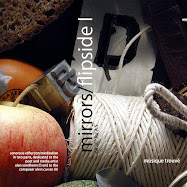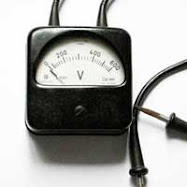... Thoughts on ART* :: No need for art. The world is a huge gallery.
"A fine art museum is a tomb, not an amusement center, and any disturbances of its soundlessness, timelessness, airlessness, and lifelessness is a disrespect and is, in many places, punishable." [Ad Reinhardt]
The beauty of imperfections. Listen to the sounds of the street [The basis of music is the qualities of the air and the vibrations of sonorous bodies]. Perfect resources: street noise, dirt, decay, mud, decrement, sputum, emission, remains, the dispensable, the fragmented, the sky, purity, black, white, emptiness [having no meaning or likelihood of fulfillment], waste. Inhale the odor of garbage. Open your eyes, absorb the colors of everyday life. No need for genius. Everyday life is the ultimate creation. No need for a flash of genius. The "common man opposed to artist/genius mythology and separation" is inoperative, invalid and ugly.
No need for artists. No need for super-arists. No need for studios. No need for lofts. No need for paintings. No need for exhibitions. No need for a documenta. No need for art schools. No need for curators. No need for collections. No need for objects of self-expression of the individual artist. Everyday life = the various branches of creative activity. No need for art-missionaries. No need for the art market. No need for public art [the city itself is a piece of art, a sculpture, ready-made, assemblage, montage. The street itself is a rich stream of sounds, images, signs, representations.] Networks in place of exclusiveness.
Absolute artifact = the web, the city, the brain, the body. "All art originates in the human mind, in our reactions to the world rather than in the visible world itself, and it is precisely because all art is 'conceptual' that all representations are recognizable by their style." [Ernst H. Gombrich]
The sacred and the profane = the profane is the sacred, the sacred is the profane. Ad Reinhardt's artistic apex reached when he concentrated on his black abstractions during the early 60’s until his death, he describes his work as "a free, unmanipulated, unmanipulatable, useless, unmarketable, irreducible, unphotographable, unreproducible, inexplicable icon" of human art. Authority in art [institutions] is useless.
"Art is too serious to be taken seriously." [Ad Reinhardt]
"Poor art is hard, clean (Shaker furniture). Rich art is easy as pie, rich filling, goodies, sweets." [Ad Reinhardt]
"Purity is the measure of greatness." [Ad Reinhardt]
"The artist as businessman is uglier than the businessman as artist. The image of the artist as a patronized idiot, as an innocent, as a company man, as a collector's item, a successful schnook, is ugly." [Ad Reinhardt]
"An artist who makes a living from his art should be registered as a 'lumpen artist,' issued an identity card, and dismissed with a suspended sentence." [Ad Reinhardt]
"By art I [Fernando Pessoa] mean everything that delights us without being ours - the trail left by what passed, a smile given to someone else, a sunset, a poem, the objective universe. To possess is to lose. To feel without possessing is to preserve and keep, for it is to extract from things their essence." [Fernando Pessoa]
* As the Austrian philosopher Ludwig Wittgenstein (1889-1951) wrote in his diary: "In art it is difficult to say something which is just as good as saying nothing at all." This "saying nothing at all" signals the true essence of todays dilemma of art, and culture in general. Today the "question of art" is obsolete. Art is replaced [displaced, suppressed] by technology, telecommunication, the extensions of the web, and the world of mass media. The artefact is the medium of the pre-digital world. The artefact represents the immobile, the immoveable, the static. Today's flow of information determinates a complexity which eliminates the dated and signed "work of art." The new creativity is a "work in progress", a data stream within a hypertext architecture.









![argonauts | [6-disc set]](http://4.bp.blogspot.com/_HGklwEj25BE/SHCljRlMJkI/AAAAAAAAALM/Na9XC_OxT7o/S187/argotwo.jpg)
